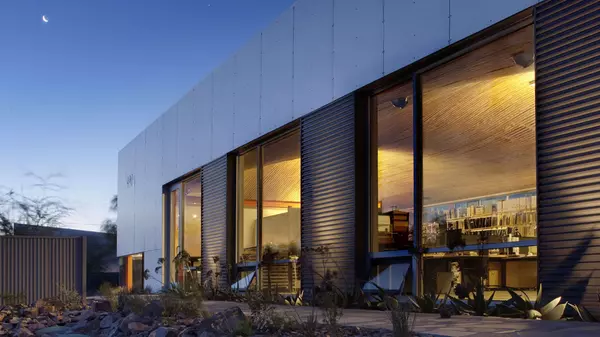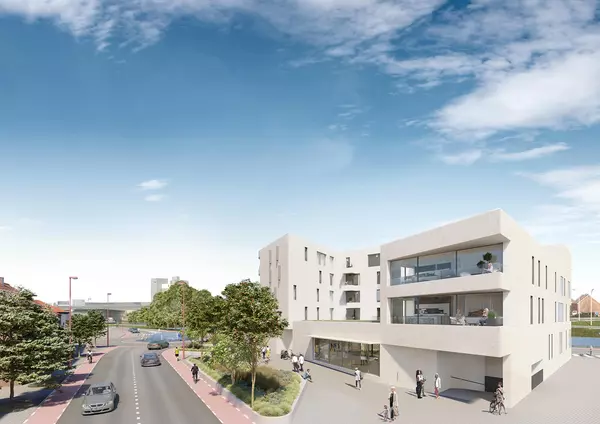Multi-Family Investing in Calgary: A 2025 Guide
Calgary’s multi-family market in 2025 is being reshaped by two forces: increased new construction and broad zoning reforms that have opened up many previously restricted neighbourhoods to higher-density multi-unit development. Together, these shifts are expanding the range of opportunities available to investors, from apartment-style condos to infill multiplexes and townhomes.
Multi-Family Forecast
According to the Calgary Real Estate Board (CREB)’s updated forecast, as of June 2025, the city is continuing to experience record-high levels of new home construction, much of which includes multi-family units and is targeted to the rental market. While this influx of supply has begun to temper price growth, particularly in some apartment segments, structural factors like ongoing population growth and strong job market fundamentals are sustaining demand, and investors can benefit from greater choices. This migration continues to support household formation and rental housing demand, helping absorb the added inventory in the multi-family segment.
As Jesse Davies of Century 21 stresses, “more entry points for investors to secure long-term, income-generating assets. With fundamentals still strong, the multi-family sector remains one of the city’s most resilient and opportunity-rich markets.”
Despite some softness in citywide apartment pricing, especially in the North East district where buyer’s market conditions are emerging, several districts and surrounding markets are showing resilience. The South East and South districts, for example, have the tightest months of supply for apartments, with 2.7 and 2.9, respectively, compared to the citywide average of 3.6 months, indicating stronger demand relative to supply. Row housing is even tighter in some areas, with City Centre showing just under two months of supply, pointing to stronger price stability and continued investor interest.
Regulations and Policy Drivers
Calgary’s regulatory environment has several unique features for multi-family investors. In 2024, the city launched city-wide rezoning to allow multi-family housing in nearly all residential areas. This means it is legally simpler to build a duplex, triplex or fourplex on a lot that was single-family. Apartment buildings on those lots are still limited, but small multi-unit properties are now by-right. This reduces the need for lengthy rezoning applications when adding units to older homes. It has already led to more infill projects in established neighbourhoods. That said, each development still requires building permits and must meet design standards (lot coverage, parking, etc.), so working with knowledgeable professionals is essential.
At the provincial level, Alberta has relatively landlord-friendly rules. There is no ongoing rent control; landlords can raise rents at lease renewal with proper notice, a minimum of three months in advance. Alberta also removed its previous nominal rent cap in April 2022, unlike BC or Ontario, where caps remain. There is no foreign-buyer tax or speculation tax in Alberta, and no provincial licensing for long-term rentals beyond the city’s STR rules.
Overall, Calgary’s regulatory environment is relatively open to higher density, especially compared to cities that still heavily restrict secondary suites or plex housing.

Renovation and Value-Add Strategies
Many Calgary multi-unit properties can be “value-add” opportunities if upgraded thoughtfully. Older apartments and townhomes often lack modern finishes and amenities. High ROI improvements can justify noticeably higher rents or sale prices. For duplexes and small plexes, adding a basement suite or converting unused space into another rentable room can dramatically boost revenue per property, now that multi-unit zoning is allowed.
As Davies notes, “With Calgary’s rental market still healthy, even modest improvements tend to pay off, especially if they address known pain points, such as old appliances, lack of parking, or dated interiors”.
Multi-Family Markets
Calgary’s multi-family landscape offers a range of formats suited to different investment approaches. Two key segments are condominiums and small-scale plex housing.
Condos
Condominiums in well-located buildings (near transit or amenities) typically offer steady tenant demand. These units offer easier maintenance than standalone buildings and remain a relatively affordable entry point to Calgary real estate. Central neighbourhoods tend to have high rent levels and cap rates. Properly chosen units (especially with modern amenities and solid rental track records) can deliver reliable cash flow even as new apartment projects come online.
Multiplexes and Townhouses
Rezoning has opened up new markets for new options for multi-family housing, including duplexes, triplexes, fourplexes, and rowhouses, as many single-family neighbourhoods can now be redeveloped with two- to four-unit buildings. It has created opportunities for infill developments in key, desirable neighbourhoods. Conversions of old bungalows into stacked duplexes or townhome clusters have already started, especially near established inner-city districts.

Neighbourhoods with Strong Potential
Calgary’s strongest multi-family investment opportunities in 2025 are deeply shaped by location-specific dynamics, driven by supply constraints, transit access, and population growth.
The South East and South districts, for example, have the tightest months of supply for apartments, with 2.7 and 2.9, respectively, compared to the citywide average of 3.6 months, indicating stronger demand relative to supply. Row housing is even tighter in some areas, with City Centre showing just under two months of supply, pointing to stronger price stability and continued investor interest.
The Beltline and North Hill zones are seeing particularly strong momentum in multi-family development. Beltline, a long-standing hub for condo investment, continues to benefit from sustained apartment construction, most of which is now purpose-built rental. In Q1 2025 alone, the Beltline led the city in apartments under construction, with over 60% of new apartment starts citywide being rentals. That level of concentrated investment reflects ongoing demand for centrally located housing, especially among young professionals and downsizers seeking access to C-Train lines, employment centres, and new cultural infrastructure.
Neighbourhoods like Bridgeland, Mission, and East Village are also attracting investor attention. These inner-city areas are part of broader revitalization and transit expansion efforts. In East Village, major riverside condo and rental developments are underway, supported by city incentives and improved streetscapes. While rents remain strong across unit types, averaging over $2,000 a month in prime areas, buyers are beginning to see more price stability, especially for older units, due to new inventory entering the market. This presents an opportunity for investors seeking value-add plays.
In the Southwest, Killarney-Glengarry stands out as a key infill zone with a balance of mature housing and new multiplex construction. Despite high listing growth in early 2025, inventory remains relatively tight for modern, transit-accessible row homes and duplexes. The area’s inclusion in light redevelopment plans tied to the Stage 3 LRT expansion further boosts its long-term positioning.
Additionally, several surrounding municipalities, including Cochrane, Canmore, Chestermere, High River, Okotoks, and Strathmore, have recorded double-digit year-over-year increases in benchmark apartment prices, suggesting that investor demand is also flowing into these adjacent markets. These outlying areas may offer favourable growth trajectories for multi-family investors seeking areas with stronger upward price momentum and tighter inventory conditions, especially if they are willing to consider converting detached properties to multi-unit.
Throughout Calgary and its surrounding municipalities, neighbourhoods with a blend of infill development potential, established transit access, and mid-priced housing are showing the best return resilience. While rent growth has slowed, the new balance between supply and demand is creating more predictable cash flow opportunities. As Davies notes, “For multi-family investors, aligning with these localized fundamentals, rather than chasing past appreciation, may prove the smarter long-term strategy in 2025 and beyond.”

Conclusion
Calgary’s multi-family market in 2025 offers a mix of challenges and opportunities. The recent surge in purpose-built rentals has eased the very tight conditions of the past, bringing more balance and choice for buyers. At the same time, the city’s growing population and diversified economy underpin steady housing demand. Condominiums, aided by moderate pricing and strong rents, remain a solid play for stable returns, even as supply rises. Small multiplexes (duplexes, townhomes) are expanding rapidly, and well-located inventory of these is likely to appreciate as infill policies open up neighbourhoods. Suburban family areas continue to attract renters with strong yields.
For investors focused on multi-family, key factors will be location, supply trends, and regulations. Properties near transit, employment centers or new and expanding amenities, such as LRT or commercial developments, carry extra appeal. Thanks to recent zoning reforms, investors now have greater access to properties in high-demand neighbourhoods that can be legally redeveloped from single-family homes into multi-unit dwellings, making infill and small-scale multi-family strategies far more feasible. Additionally, choosing properties with good value-add opportunity can improve returns, especially in mid-market rentals where tenants reward quality upgrades.
Finding the right property for your investment goals can be challenging, but with a top realtor experienced in investment properties and condos, it is easier. Jesse Davies brings over 15 years of specialized real estate experience in Calgary, with a deep understanding of local zoning, rental trends, and cash flow strategies. His team at the Jesse Davies Real Estate Group has helped many investors seeking income-generating and multi-family properties. His team specializes in investor-oriented properties such as condos, townhomes, and duplexes, offering guidance informed by detailed market analysis and neighbourhood expertise.
Recent Posts











